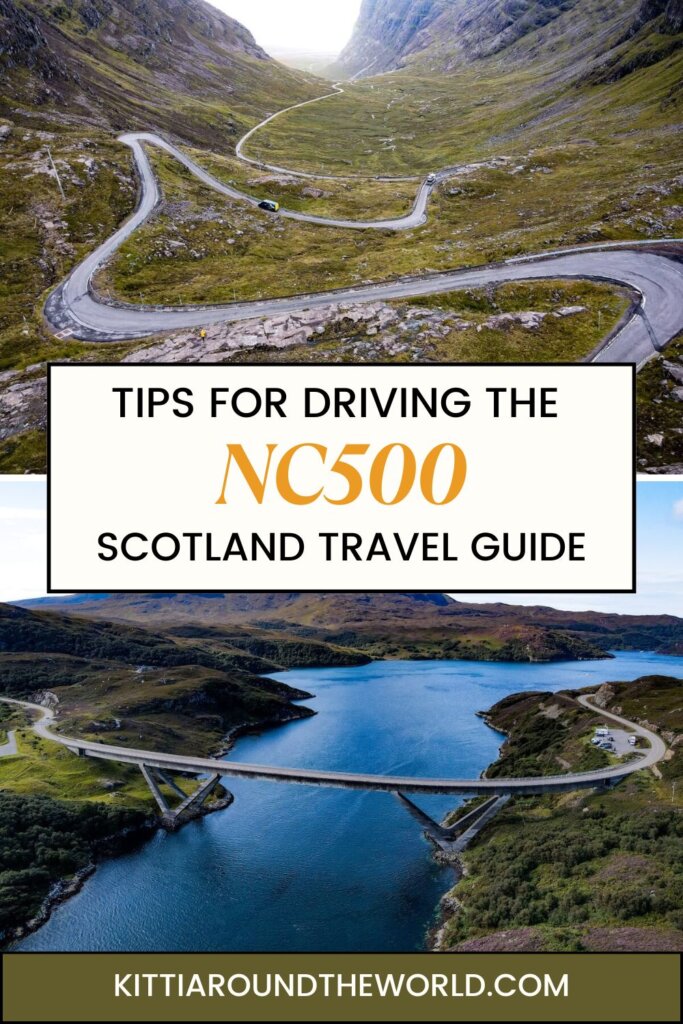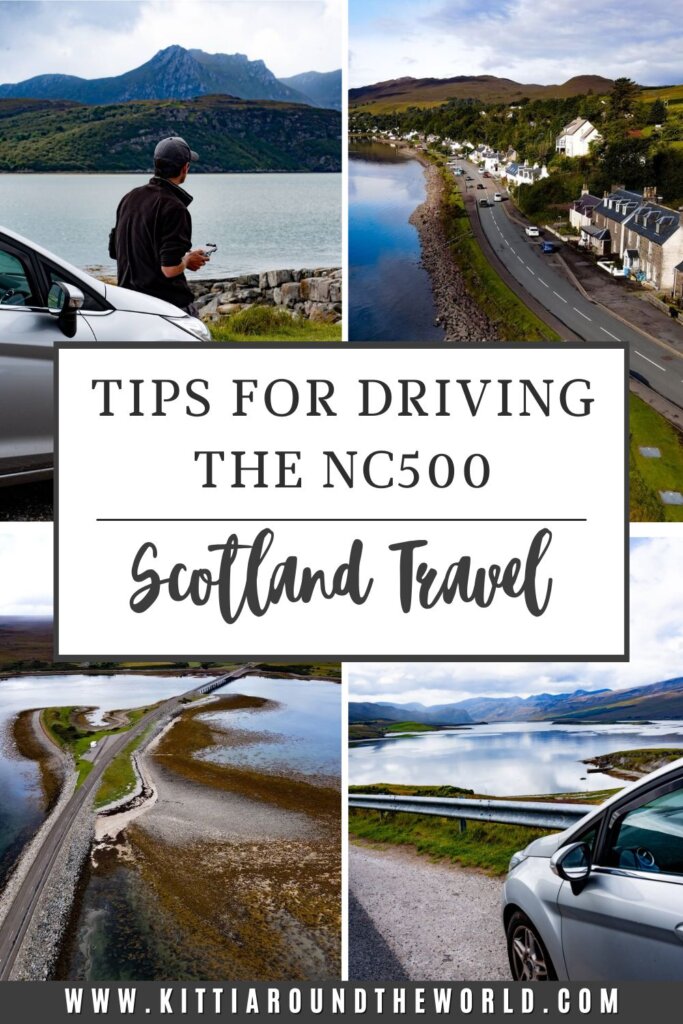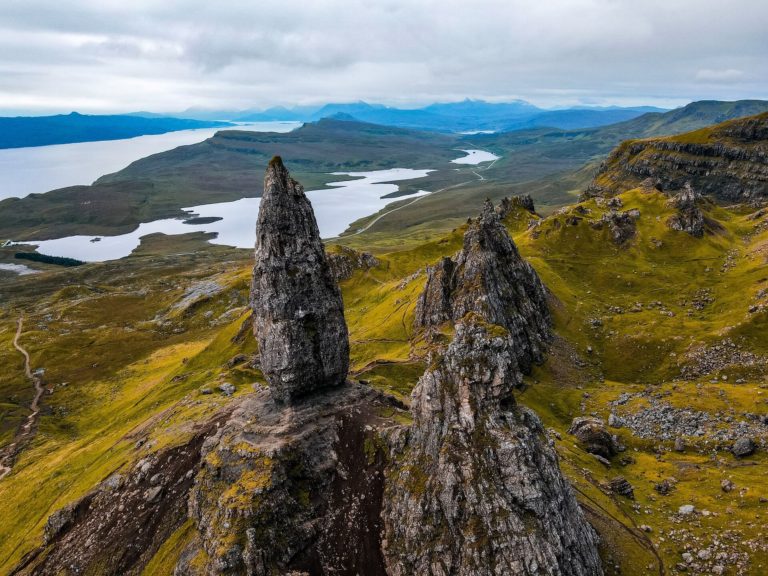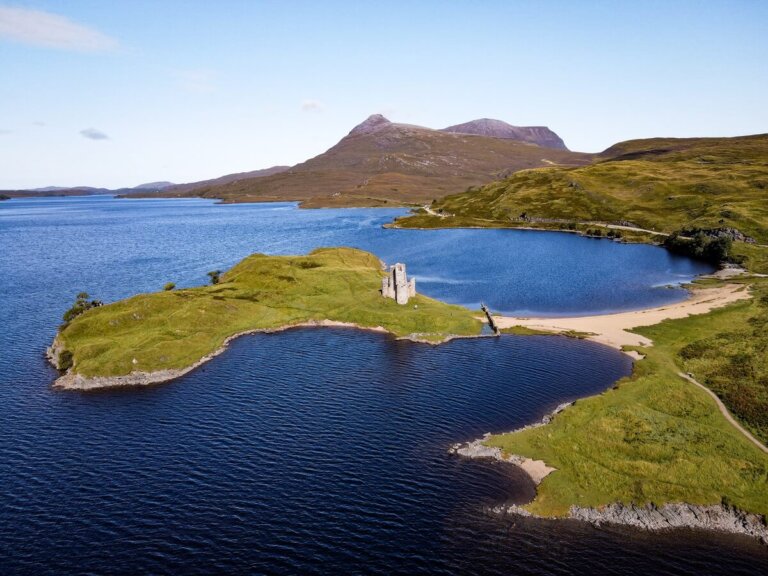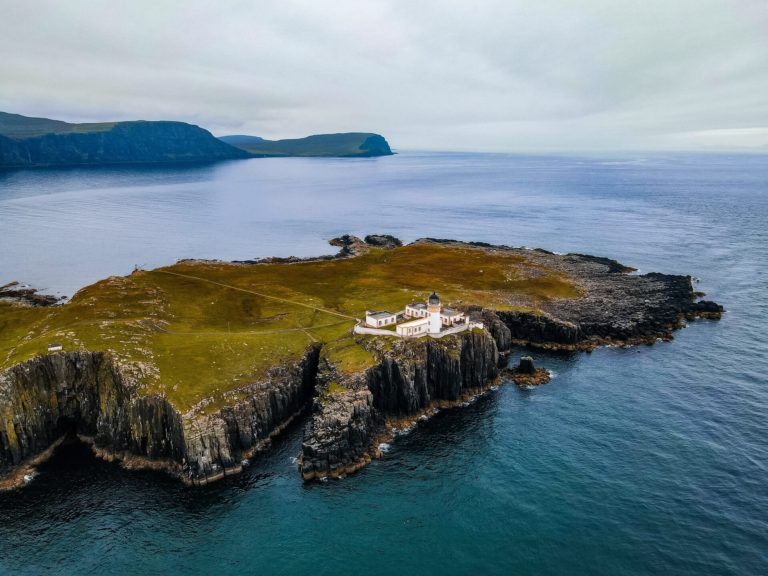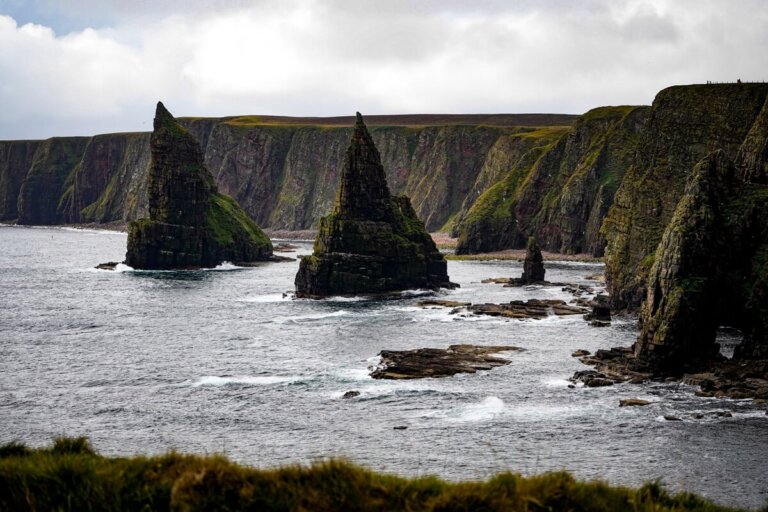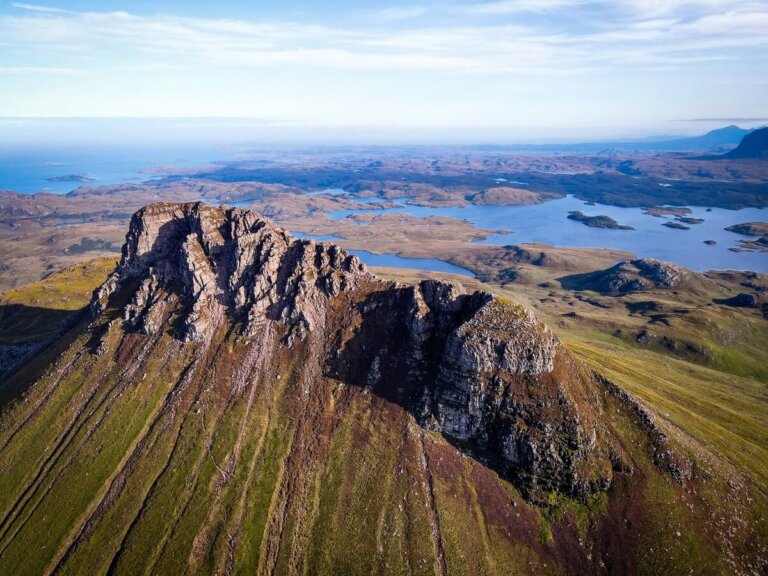Tips for Driving the NC500 in Scotland
Driving the North Coast 500, more commonly known as the NC500, is without doubt the most scenic road trip we’ve done in the United Kingdom.
It’s a 516-mile-long route around Scotland’s rugged north, passing incredible coastal views, mountainous landscapes, white-sand beaches that will make you feel like you’re in the Caribbean (apart from the temperatures), rich wildlife and picturesque villages.
It’s basically Scotland’s version of the Pacific Coast Highway in the US and, even though the NC500 is way shorter, it’s packed with some of the best attractions in the Scottish Highlands. In this guide we’ll provide you with our essential tips to make sure you have a safe, responsible and unforgettable road trip.
Disclosure: This post may contain affiliate links, which means we may receive a small commission if you click a link and purchase something. Clicking these links won’t cost you anything, but it will help us to keep this site up and running! Learn more about our affiliate policy.
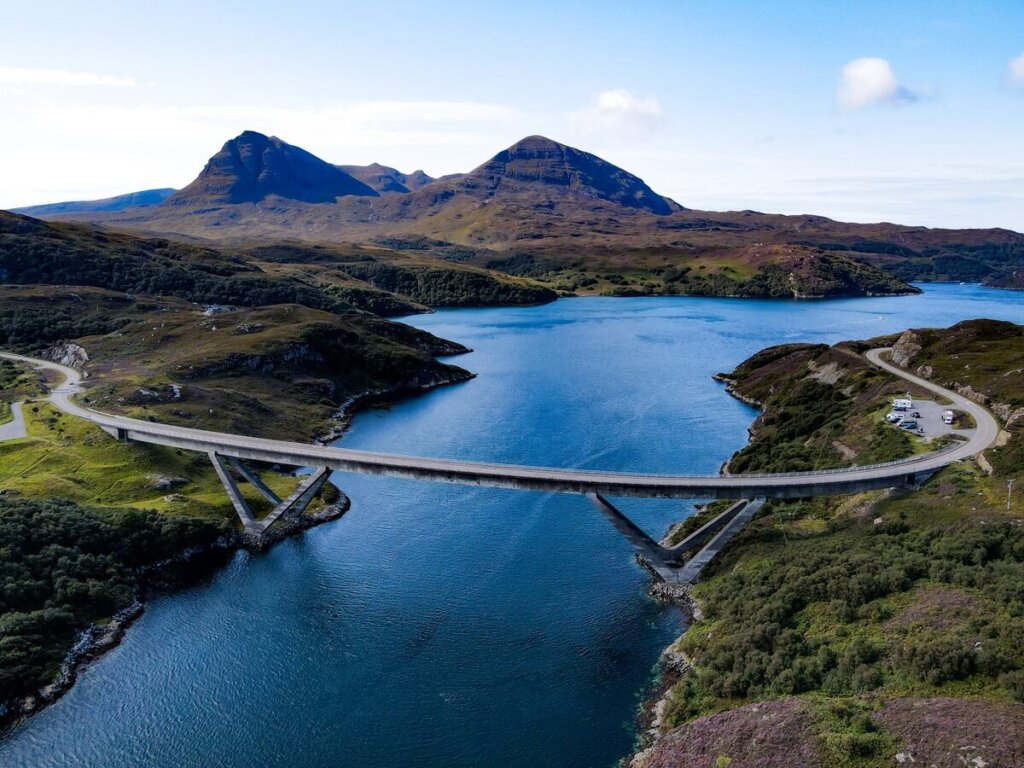
What is the North Coast 500, aka the NC500?
The NC500 is a 516-mile-long route around Scotland’s northernmost region. Although the road connecting the towns and cities along this route isn’t new, the official NC500 was only launched in 2014. Since then it has increased in popularity, so much so that locals have very mixed feelings about the number of tourists driving this route, especially during the summer.
The route passes through six regions of the Scottish Highlands: Inverness-shire, Wester Ross, Easter Ross, Sutherland, Caithness, and the Black Isle.
The scenic NC500 starts and finishes in Inverness, the capital of the Scottish Highlands. From Inverness you can either drive north-east first towards Wick and John o’ Groats or, alternatively, you can also drive west towards Shieldaig and then north towards Ullapool.
A minimum of 5 days is required to drive the NC500. However, we think that you should plan for at least 7 days to have a more enjoyable experience.
You can complete the NC500 in all types of vehicles including your average car, electric car, sports car, vintage car, campervan, motorbike, or even on a bicycle.

Tips for Driving the NC500 in Scotland
Although the NC500 only launched as an official route in 2014, the roads that you’ll be driving on have been around a lot longer. They still connect remote villages and towns, and local people use these roads to drive to work, for emergencies, and to herd their animals from one pasture to another.
Below we’ve listed our main tips and a few essential things to bear in mind before you start your journey along the NC500.
1. You’ll need to drive on the left
If you’re a UK driver, then you can ignore this fairly obvious point. However, if you’re used to driving on the right, then it might take a bit of getting used to. Especially when you’re driving along single track roads. Our main tip is to always keep to the left as much as possible, and avoid pulling into a passing place on the right.
2. Make sure your vehicle is ready for a long-distance drive
If you’re driving your own vehicle then it’s important to have it road-trip ready. The last thing you want is to break down because you didn’t do some basic checks prior to setting off.
We recommend checking your tire pressure, car fluids, battery, lights, breaks, and windscreen wipers. Of course, unfortunate incidents can still happen. Therefore, make sure to have a spare tire, coolant, a first-aid kit, extra water and food, as well as other things like a multipurpose toolkit.
3. Be extra cautious if you’re not an experienced driver
Driving along single track country roads might sound easy and romantic. In reality, there’s a lot to be aware of. If you’re not an experienced driver, then please take extra care when driving. There will be many other vehicles on the road with you, not to mention livestock, wildlife and weather conditions all combining to make driving more difficult.
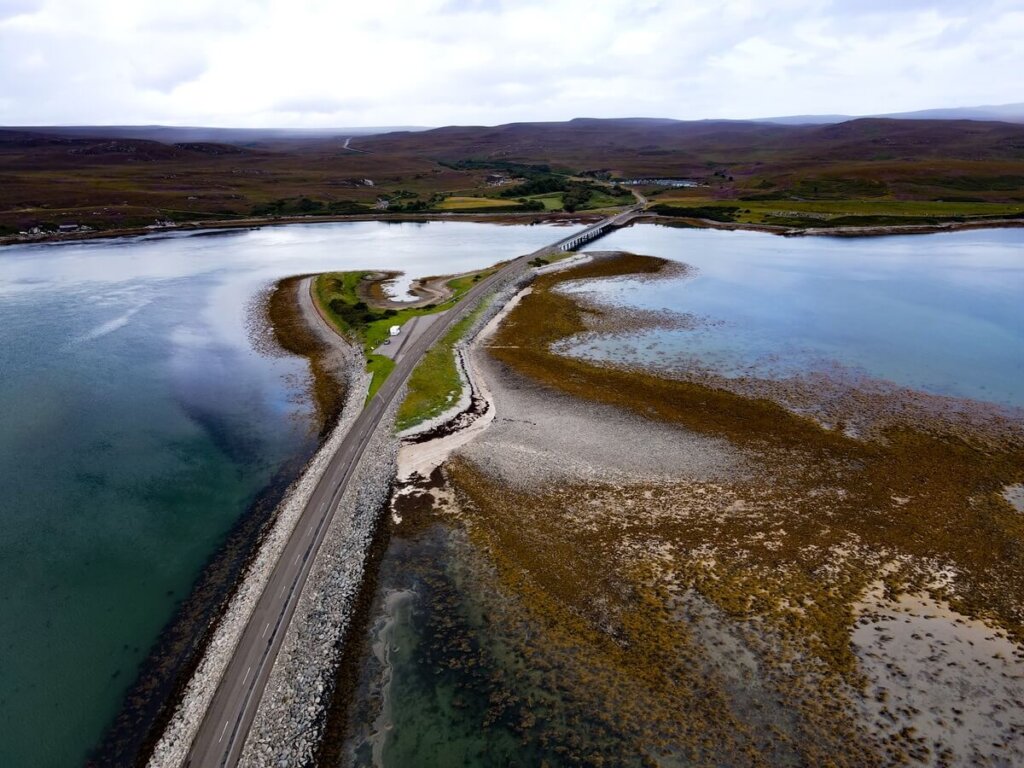
4. The road isn’t just for tourists
Over the past few years the number of people arriving in Scotland to drive along the NC500 has increased significantly. Please bear in mind that these roads weren’t created for tourists. In fact, they are probably not even suitable for the sheer volume of traffic that drives along them during peak season.
These narrow, single track country roads were being used by locals way before the NC500 was established. This means that you’ll be sharing them with those who live up here, which is why it’s important that you stick to the rules and don’t behave like you own the roads.
5. Drive at a reasonable speed
We shouldn’t need to remind you to obey the speed limit when driving along the NC500. The speed limit on a single carriageway in Scotland is 60mph. However, you really shouldn’t be driving at the maximum speed and, let’s face it, you probably won’t be able to due to the continuous corners and stopping every two seconds to admire the view!
6. Road conditions
Some sections of the NC500 will take you on nice wide carriageways. However, for the most part, especially along the western section, you’ll be driving on narrow, single-track roads. There are many potholes, sharp bends, hidden dips, and steep gradients along the NC500. Hence why driving at a lower speed is necessary.
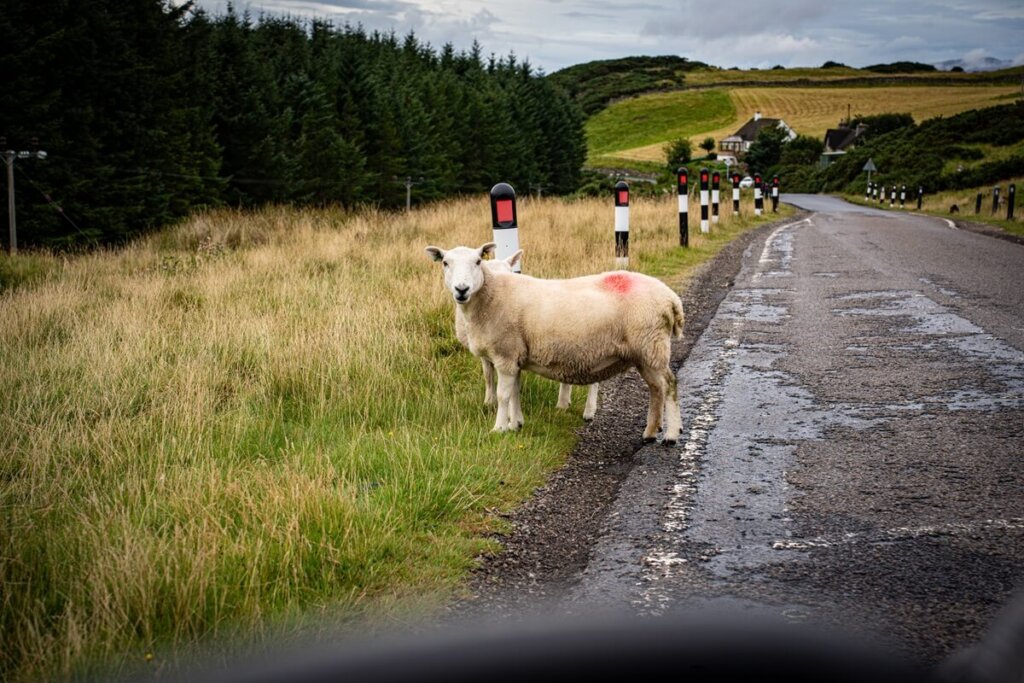
7. Potential road obstacles
As we keep mentioning, you’ll be sharing the road with others. There are plenty of caravans and motorhomes, as well as motorbikes and cyclists, along this road, all here to enjoy the stunning scenery of the Scottish Highlands.
There will also be just as many farm vehicles, livestock, and other wildlife on the roads too. Therefore, it’s important that you always stay focused. We know from experience that this’ll be difficult because the landscape around you is hard to resist looking at. If you have multiple drivers, perhaps share the load so that you all get to enjoy the views. You can also add an extra day or two to your trip, which will allow you to stop more regularly and take it all in.
8. Patience is key!
Don’t let frustration get to you if you’re stuck behind a caravan, tractor, or a flock of sheep. Try to embrace it instead; it’s all part of the experience. If you’re a slower driver, or driving a bigger vehicle, then make sure to pull in to a passing place so others can pass you.
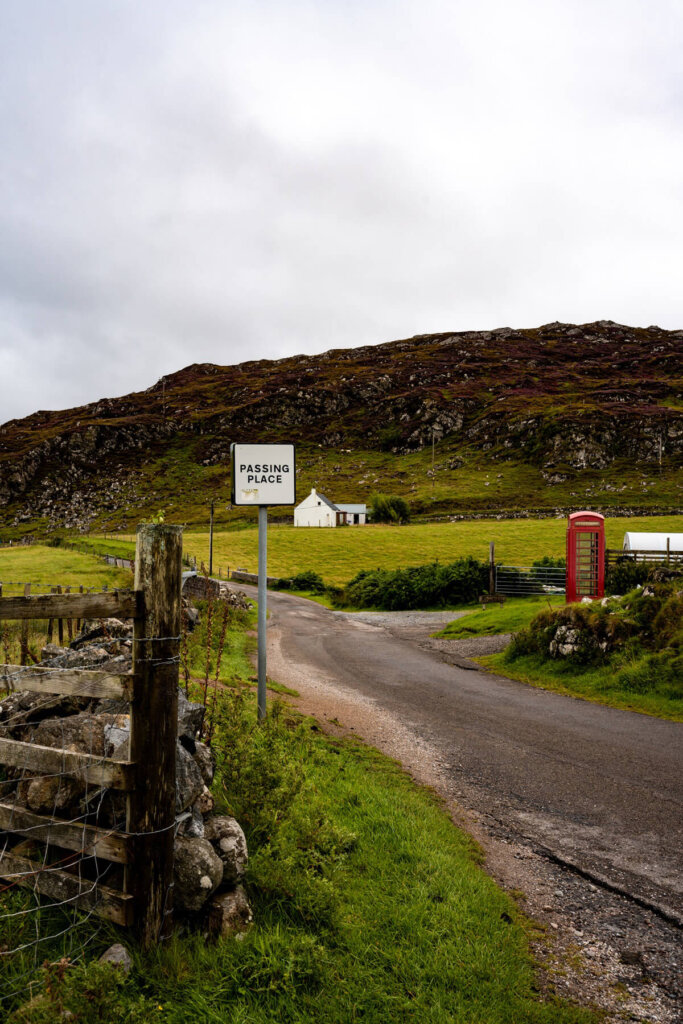

9. Use the passing places correctly
Okay, this one is super important. Single carriageways have dedicated passing places which either you or the oncoming vehicle can pull in to so you can pass one another. Unlike in Devon and Cornwall, there are actually way more passing places along the NC500. Thankfully, a lot of the time you’ll also be able to see quite far ahead. This will help you to see if someone is coming and who has the passing place on their side.
It’s important to note that these are PASSING places and not parking spots. Please don’t ever park and leave your vehicle in a passing place. You could easily block not just fellow drivers but emergency vehicles too.
We also don’t recommend stopping in one for a lunch break either.
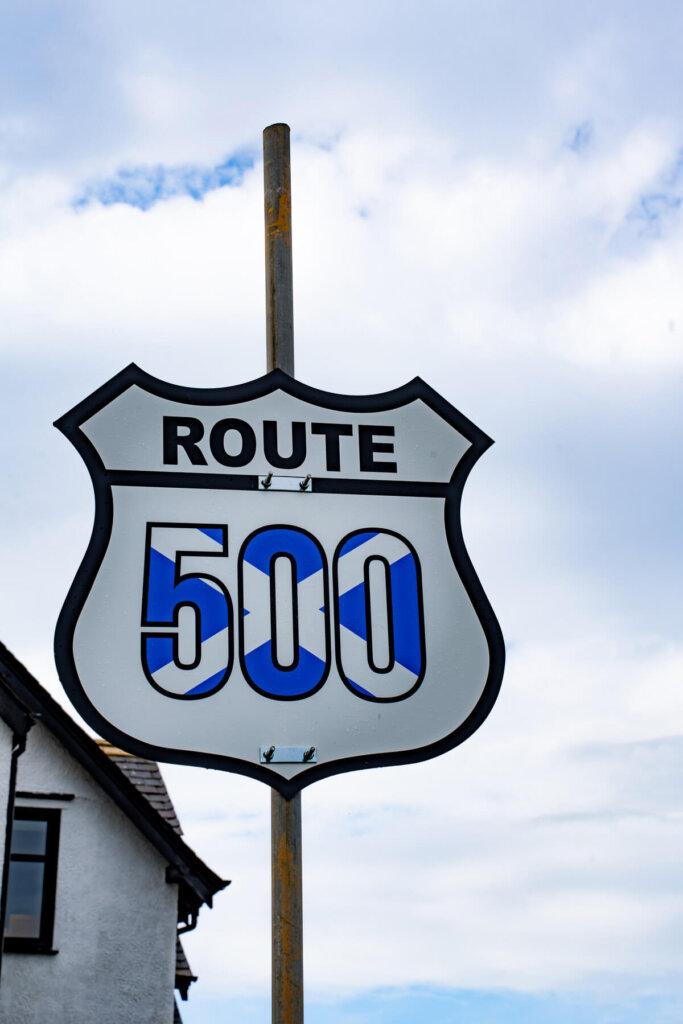
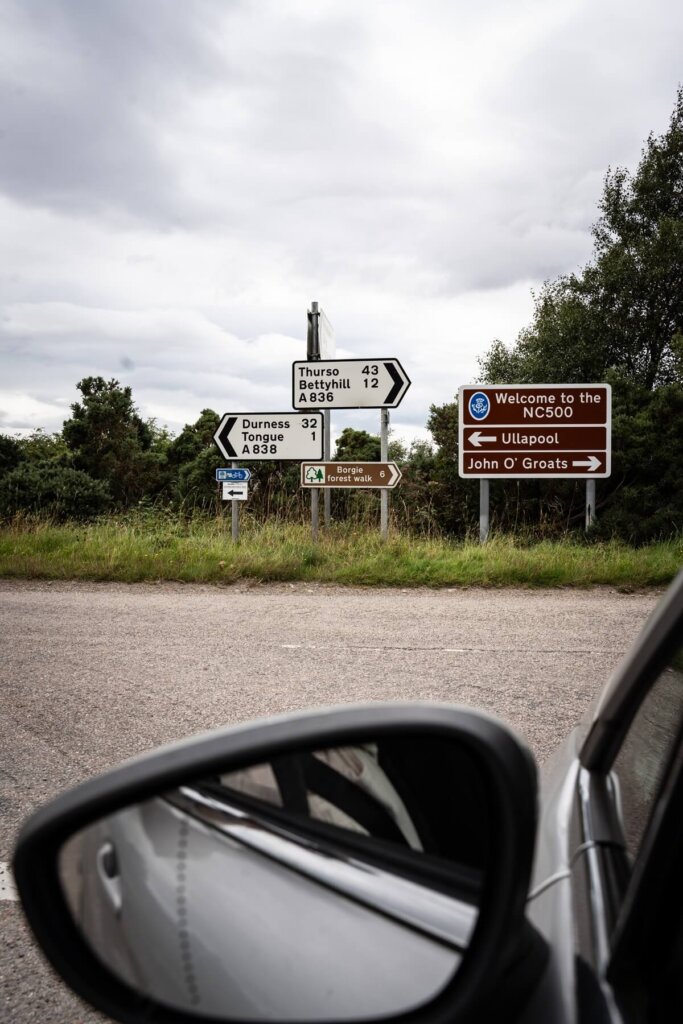
10. There’s next to no signal
Another thing to bear in mind before you set off is that there won’t be much signal when driving; and we don’t just mean 5G and 4G. Our phones didn’t have a single bar a lot of the time.
Therefore, we recommend downloading offline maps and marking all the spots you’d like to stop at because you’re unlikely to be able to check them once you’re out and about. That being said, you may get some spotty signal here and there, but it’s always better to be prepared. There are also road signs too, which you can follow if you want to do it the good old fashioned way.
11. Fill up whenever you can
You’ll be driving through some remote locations, with limited petrol stations. Therefore, we suggest topping up your car whenever you can. The same applies if you drive an electric vehicle. Check where the EV charging points are before you set off.
12. Be prepared for changing weather conditions
One minute you’re driving in sunshine, the next you’re in a hailstorm. That kind of sums up the weather in the Scottish Highlands.
Even if you’re there during the summer, unless you’re lucky enough to be there during a heatwave, you can still expect to experience all four seasons in one day. Be prepared to drive in all types of conditions, from thick fog to heavy rain and blinding sunshine.

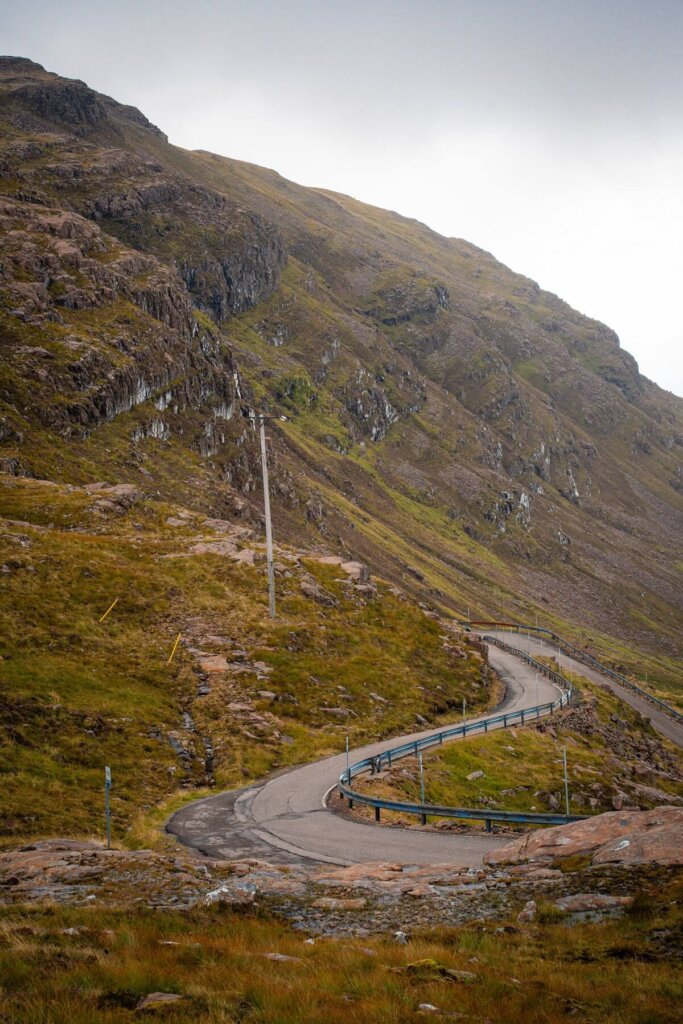
13. Don’t leave your car door open for too long
If you don’t want to offer a free ride – and a snack – to the midges, then make sure to get in and out of the car as quickly as possible. The midge season is between May and September, which of course coincides with the most popular time to drive the NC500.
We forgot that the midges can fill the inside of your car in the blink of an eye more times than we’d like to admit. Therefore, we recommend getting ready before you open the doors and don’t linger in one spot for too long.
14. Don’t drink and drive!
It sounds pretty obvious but with plenty of distilleries to visit along the route, it’s worth highlighting that Scotland has a zero tolerance policy when it comes to drinking and driving. You can read more about this on the official website.
15. Enjoy the drive
You’re here to drive along one of the most scenic roads in the world, so you ought to enjoy it. We recommend arriving prepared with a map of the attractions you want to stop at, pre-booked accommodation, offline maps and a positive attitude.
This will already make your road-trip way more relaxed. Stressing about things that are out of your control, such as other drivers and the weather, will be pointless and will only make your journey less enjoyable.
Additional NC500 Resources
Below we’ll link some of our other useful guides, from the best beaches, outdoor and man-made attractions, to beginner’s guides, as well as some official websites you should also use when planning your own NC500 trip.
Read Next:
A Beginner’s Guide to the NC500 in Scotland
Natural Attractions to Visit Along the NC500 in Scotland
Man-Made Landmarks to Visit Along the NC500 in Scotland
Stunning Beaches to Visit along the NC500 in Scotland
How to Spend 2 Days in Inverness, Scotland
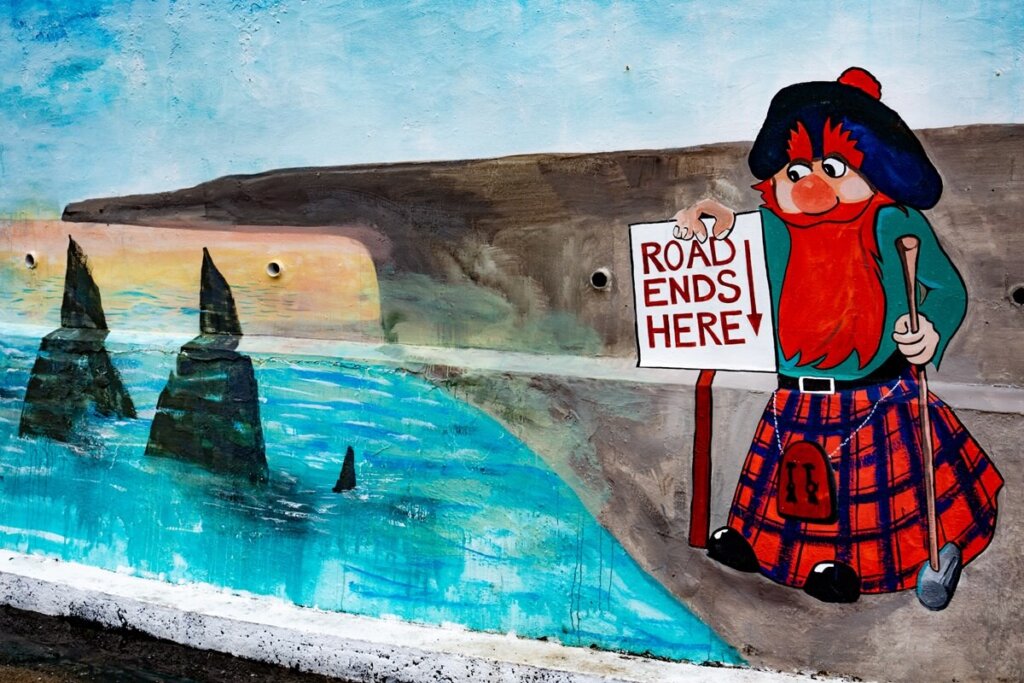
Final Thoughts on Driving the NC500 in Scotland
We absolutely loved driving the NC500, even though we met with all sorts of drivers and weather conditions along the way. Arriving prepared definitely helped us to have a more enjoyable experience. We spent quite a few hours planning out our route, including where we wanted to stop and stay, before we left. In addition, we also made sure that our vehicle was up for the long drive and that, if anything happened, we could say that we did all the necessary checks rather than blaming ourselves for overlooking them. Of course, there were other things that were out of our control, but we tried to not let these factors ruin our experience.
Have you ever driven the NC500 in Scotland? If so, what was your experience and would you add any further tips to our list? If not, we hope that you found our tips for driving the NC500 useful.



